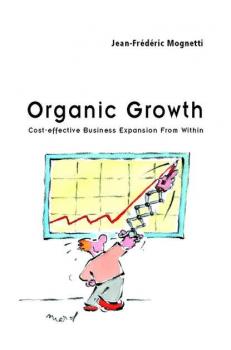Управление, подбор персонала
Различные книги в жанре Управление, подбор персоналаRisk Quantification
This book offers a practical answer for the non-mathematician to all the questions any businessman always wanted to ask about risk quantification, and never dare to ask. Enterprise-wide risk management (ERM) is a key issue for board of directors worldwide. Its proper implementation ensures transparent governance with all stakeholders’ interests integrated into the strategic equation. Furthermore, Risk quantification is the cornerstone of effective risk management,at the strategic and tactical level, covering finance as well as ethics considerations. Both downside and upside risks (threats & opportunities) must be assessed to select the most efficient risk control measures and to set up efficient risk financing mechanisms. Only thus will an optimum return on capital and a reliable protection against bankruptcy be ensured, i.e. long term sustainable development. Within the ERM framework, each individual operational entity is called upon to control its own risks, within the guidelines set up by the board of directors, whereas the risk financing strategy is developed and implemented at the corporate level to optimise the balance between threats and opportunities, systematic and non systematic risks. This book is designed to equip each board member, each executives and each field manager, with the tool box enabling them to quantify the risks within his/her jurisdiction to all the extend possible and thus make sound, rational and justifiable decisions, while recognising the limits of the exercise. Beyond traditional probability analysis, used since the 18th Century by the insurance community, it offers insight into new developments like Bayesian expert networks, Monte-Carlo simulation, etc. with practical illustrations on how to implement them within the three steps of risk management, diagnostic, treatment and audit. With a foreword by Catherine Veret and an introduction by Kevin Knight.
Pension Economics
While not attempting to train readers as professional economists, this book aims to provide a secure grounding in the theory and practice of economics insofar as it deals with pension matters. From reading this book, the user will understand: * The key types of pension scheme * The role of pensions in maximizing individual lifetime welfare * The role of pensions in individual savings and retirement decisions * The role and consequences of the pension plan from the company's viewpoint * The role of pensions in promoting aggregate savings * The role of pensions and retirement in overlapping generations models * The economics of ageing and intergenerational accounting * The social welfare implications of pensions * The lessons of behavioural economics for pensions
Pension Finance
This book provides a secure grounding in the theory and practice of finance insofar as it deals with pension matters. By using it, the reader will understand the various types of investment assets; * the allocation of personal wealth to different asset classes * corporate pension finance * the financial aspects of defined contribution pension plans during both the accumulation and distribution phases * the financial aspects of defined benefit pension plans * the role of pension funds and pension fund management * pension fund performance measurement and attribution * risk management in pension funds
Currency Strategy
Currency Strategy, Second Edition develops new techniques and explains classic tools available for predicting, managing, and optimizing fluctuations in the currency markets. Author Callum Henderson shows readers ho to use mathematical models to assist in the prediction of crises and gives practical advice on how to use these and other tools successfully. Given there such huge focus on China at the moment, the timing of this new edition is particularly important. The new edition will feature a thorough update on the key developments in the past 3 years, new chapters on emerging markets, an in-depth review of the markets of China and India and their currencies and much more.
CFO Insights
CFO Insights: Delivering High Performance explores the implications of Accenture’s high performance finance research and interprets the link between high performance business and the role of the CFO in delivering this. Written from the perspective of the Chief Financial Officer, the book provides real-world, relevant examples, including flagship interviews with CFOs of high performing businesses. The book also includes industry analyses prepared by the Accenture Strategy and Business Architecture Practice, case studies, and chapters dedicated to the CFO and financial practices of Japan, China, Latin America, and Eastern Europe.
Credit Derivatives
The credit derivatives market has developed rapidly over the last ten years and is now well established in the banking community and is increasingly making its presence felt in all areas of finance. This book covers the subject from credit bonds, asset swaps and related ‘real world’ issues such as liquidity, poor data, and credit spreads, to the latest innovations in portfolio products, hedging and risk management techniques. The book concentrates on practical issues and develops an understanding of the products through applications and detailed analysis of the risks and alternative means of trading. Credit Derivatives: Risk Management, Trading and Investing provides: A description of the key products, applications, and an analysis of typical trades including basis trading, hedging, and credit structuring Analysis of the industry standard ‘default and recovery’ and Copula models including many examples, and a description of the models’ shortcomings Tools and techniques for the management of a portfolio or book of credit risks including appropriate and inappropriate methods of correlation risk management A thorough analysis of counterparty risk An intuitive understanding of credit correlation in reality and in the Copula model The CD in the back of this book includes an Evaluation Version of Mathcad® 12 Single User Edition, which is reproduced by permission. This software is a fully-functional trial of Mathcad which will expire 30 days from installation. For technical support or more information see http://www.mathcad.com.
Catastrophic Risk
Catastrophic risk is one of the most significant and challenging areas of corporate risk management. Analyze this risk for your company with Catastrophic Risk and make sure you have sufficient resources to absorb losses and avoid financial distress. The first comprehensive volume to address this topic from a financial perspective, this book is a guide to the worst financial risks threatening companies and industries today. Author Eric Banks begins with a consideration of ?catastrophe? and its mplications, looks at the state of actuarial and financial modelling of catastrophe risks, and discusses the creation of a risk management framework that will enable the efficient and secure management of exposure. Catastrophic Risk is essential reading if you're a corporate treasurer, CFO, or insurance/financial risk manager responsible for corporate risk management. Order your copy today.
Organic Growth
A key concern today for all those involved in business development is how to grow your company not only faster but cheaper (or economically). Organic Growth is a rigorous new concept, grounded in a common sense, two-pronged approach, that is, companies can continue to pursue high-risk, high-reward growth strategies, but they should also be very aware of overlooked or sub-optimized opportunities for growth within their own company. This book is a guide to how to dynamically combine managerial and 'people' skills to unlock a hidden layer of corporate value.
Uncommon Sense
Peter Cochrane is one of our most far-sighted visionaries, and brings brilliant clarity and focus to our understanding of ourselves and our technologies, and of how profoundly each is transforming the other. -Douglas Adams, Author, The Hitch Hiker's Guide to the Galaxy In Uncommon Sense, Peter Cochrane's follow up to the radical 108 Tips for Time Traveller, Peter explains how very simple analysis allows the prediction of such debacles as the 3G auction and the subsequent collapse of an industry, whilst simple-minded thinking is dangerous in the context of a world that is predominantly chaotic and out of control. People balked when Peter suggested a wholesale move to eWorking, the rise of email and text messaging, and the dotcom regime mirroring the boom and bust cycle of the industrial revolution. His predictions of the use and growth of mobile devices and communication, or use of chip implants for humans to replace ID cards, passports, and medical records, or iris scanners and fingerprint readers – were all seen as unlikely. Today they are a reality. How then will the world react to his predictions as set out in Uncommon Sense of a networked world of distributed ignorance and sharing overcoming an old world of concentrated skill and control? To everything becoming 'Napsterised' in every dimension, where storage and processing power cost nothing, and become connected without the help of the old network companies? A world where individuals create their own networks, where laws of copyright and resale, and old business models have to be changed as giant industries are dragged kicking and screaming out of the 19th Century and into the 21st? Peter Cochrane poses and answers questions, suggests solutions, and raises red flags on issues that need to be addressed. Tables, diagrams, pictures and illustrations generously support all of the text, with the most difficult aspects illustrated by simulations and other material on a CD and links to a web site with an ongoing expansion of the themes addressed.
Global Strategy
This comprehensive volume from Wiley's Global Dimensions of Business series explores the topic of international strategic management at an MBA or Executive Education level. Authored by an accomplished teacher who possesses a strong understanding of the market, this text offers clear frameworks coupled with lively, international case studies. Written by an experienced teacher possessing a strong research profile and a clear understanding of the market. Emphasizes organizational competences and provides a direct bridge to the strategy frameworks and concepts essential to MBA and Executive Education programs. Focuses on capabilities, capability-building and knowledge, and highlights the distinction between input and leveraging in terms of capabilities. Reviews additional opportunities for making performance gains in the international environment and the additional complexity involved in managing in a global – rather than domestic – environment. All chapters include sections on essential reading, student questions, summaries, case examples, and ‘key terms.’









